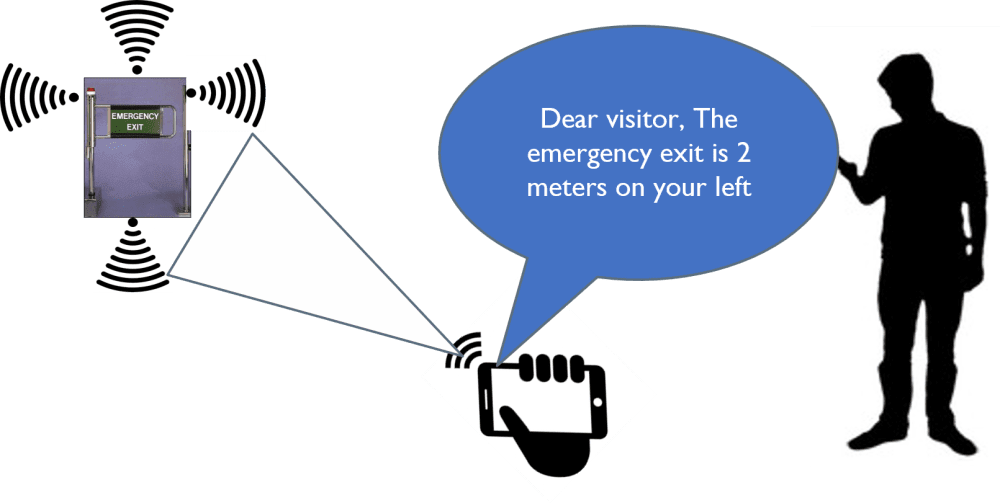Evacudoor is a tech-driven fire safety business that offers a smart evacuation system for buildings. It combines IoT sensors, real-time alerts, and mobile navigation to help people safely exit during emergencies like fires.
Evacudoor targets commercial buildings, residential complexes, hospitals, schools, hotels, malls, and industrial sites, helping them meet safety regulations, reduce liability, and protect lives.
1. How the Invention Works
Evacudoor is a smart emergency exit system that helps people escape from buildings safely during a fire or any emergency.
Here’s what happens when there’s a fire:
- Smart sensors inside the building detect smoke, heat, or fire.
- Alarms ring and alert occupants
- The system then sends an alert to people’s smartphones, telling them where the nearest emergency exit is located.
- It gives step-by-step directions to the nearest safe exit.
2. What Makes It Novel (New and Unique)
- It doesn’t just show static signs, it actively generates a signal out to be received by any smartphone nearby.
- It works like a GPS inside the building, something most fire safety systems don’t do.
3. How It Would Be Produced
- The smart sensors and devices (smoke detectors, heat sensors, smart lights) would be made or sourced locally and internationally.
- The mobile app and software would be developed by Kenyan tech professionals (software developers, UI/UX designers).
- Installation teams would set up the system in buildings, making sure all exits, hallways, and emergency areas are covered.
- The system would be tested and certified by Kenyan safety authorities like KEBS and the Nairobi Fire Department.
This would create job opportunities for local technicians, software engineers, and safety consultants.
4. Where It Would Be Applied
Evacudoor would be installed in any building where people need to evacuate safely, especially in emergencies:
- High-rise apartments and office buildings in Nairobi and other cities.
- Hospitals and clinics, where patients may need clear, safe evacuation paths.
- Schools and universities, to protect students and staff.
- Shopping malls, hotels, and restaurants, where there are large crowds.
- Factories and warehouses, where fires can spread quickly and staff may need fast direction.
- Government buildings and public service areas like airports and train stations.
Like this entry?
-
About the Entrant
- Name:Joseph Ngugi
- Type of entry:individual
- Patent status:pending

